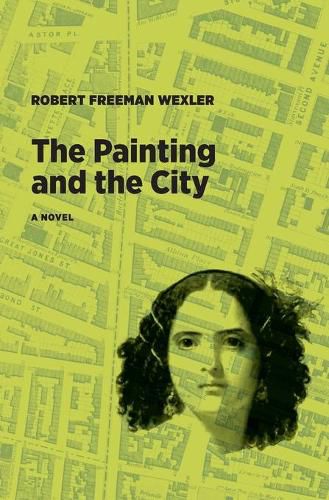Readings Newsletter
Become a Readings Member to make your shopping experience even easier.
Sign in or sign up for free!
You’re not far away from qualifying for FREE standard shipping within Australia
You’ve qualified for FREE standard shipping within Australia
The cart is loading…






This title is printed to order. This book may have been self-published. If so, we cannot guarantee the quality of the content. In the main most books will have gone through the editing process however some may not. We therefore suggest that you be aware of this before ordering this book. If in doubt check either the author or publisher’s details as we are unable to accept any returns unless they are faulty. Please contact us if you have any questions.
Robert Freeman Wexler’s potent blend of urban realism and fantasy- North American Surrealism is the term Jeff VanderMeer has coined for Wexler’s work-is on full display in his second novel, which makes its US debut some 12 years after its initial limited-edition publication in the UK.
.
At a mundane Manhattan party in the first summer of the twenty-first century, sculptor Jacob Lerner catches sight of an old painting and is transfixed. Who is the woman it portrays so intently? And what accounts for the malevolent gaze of the figure lurking behind her?
Striving to produce art that meets his high standards, without surrender to the demands of the marketplace, Lerner is also driven to learn about the haunting portrait and its creator, Philip Schuyler. His discovery of Schuyler’s journal reveals the sinister forces that coerced the artist as he fulfilled his commission in 1840s New York, and sharpens Lerner’s own conflict with those forces that still control the modern city.
Propelled in his quest by a glass marionette with unusual powers, Lerner finds himself slipping back and forth in time between the present-day city and Schuyler’s Manhattan, before the island’s pastures and streams were buried under concrete. His obsession comes to dominate his own art: he produces a pair of works, one that recovers the promise of the preindustrial island; the other a visualization of the modern metropolis, corrupted by greed and entrenched interests, and its possible destruction.
With his vision of a city in ruins, open to regeneration through nature and art, Lerner arrives at a cataclysmic conclusion.
$9.00 standard shipping within Australia
FREE standard shipping within Australia for orders over $100.00
Express & International shipping calculated at checkout
This title is printed to order. This book may have been self-published. If so, we cannot guarantee the quality of the content. In the main most books will have gone through the editing process however some may not. We therefore suggest that you be aware of this before ordering this book. If in doubt check either the author or publisher’s details as we are unable to accept any returns unless they are faulty. Please contact us if you have any questions.
Robert Freeman Wexler’s potent blend of urban realism and fantasy- North American Surrealism is the term Jeff VanderMeer has coined for Wexler’s work-is on full display in his second novel, which makes its US debut some 12 years after its initial limited-edition publication in the UK.
.
At a mundane Manhattan party in the first summer of the twenty-first century, sculptor Jacob Lerner catches sight of an old painting and is transfixed. Who is the woman it portrays so intently? And what accounts for the malevolent gaze of the figure lurking behind her?
Striving to produce art that meets his high standards, without surrender to the demands of the marketplace, Lerner is also driven to learn about the haunting portrait and its creator, Philip Schuyler. His discovery of Schuyler’s journal reveals the sinister forces that coerced the artist as he fulfilled his commission in 1840s New York, and sharpens Lerner’s own conflict with those forces that still control the modern city.
Propelled in his quest by a glass marionette with unusual powers, Lerner finds himself slipping back and forth in time between the present-day city and Schuyler’s Manhattan, before the island’s pastures and streams were buried under concrete. His obsession comes to dominate his own art: he produces a pair of works, one that recovers the promise of the preindustrial island; the other a visualization of the modern metropolis, corrupted by greed and entrenched interests, and its possible destruction.
With his vision of a city in ruins, open to regeneration through nature and art, Lerner arrives at a cataclysmic conclusion.